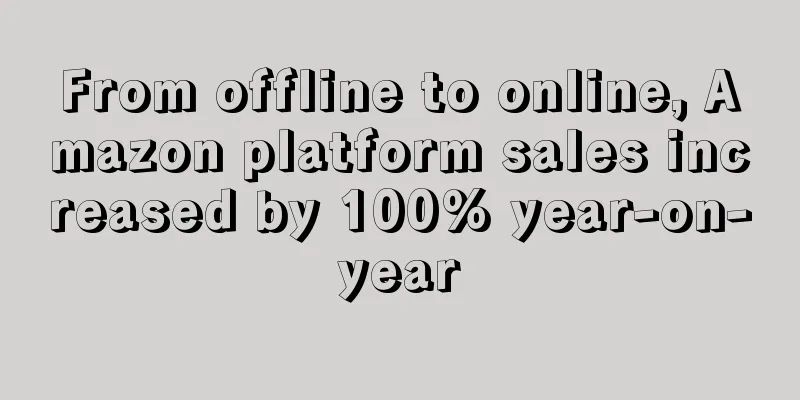With more than 6 million independent sellers and a GMV of $25 billion, Amazon is still able to keep up

|
According to Marketplace Pulse, there are nearly 10 million seller accounts in Amazon’s 19 global markets . Most of these businesses sell in multiple markets, and in addition to the United States, Europe is the market where they open multiple accounts . Therefore, the number of unique sellers is about 6 million .
When using duplicate seller accounts, Amazon adds seven to eight hundred thousand new sellers per year. That number hasn’t increased, but then Amazon is still adding two thousand new sellers per day.
Amazon North America ( including the United States, Canada, and Mexico ) is the largest marketplace with more than 3 million sellers . However, it is also the longest-running marketplace and therefore the slowest growing. The North American marketplace accounts for 51% of all sellers . Next year, this proportion will drop below 50% .
Germany, the UK, France, Italy, Spain, Sweden, the Netherlands, and Poland make up the European market , with 24% of Amazon sellers . Most sellers in Europe sell products in multiple countries. That’s why the new sites recently launched in Poland and Sweden had thousands of sellers on day one, but few from the local markets .
Among the major markets, India is the fastest growing . Compared with individual countries, in the last year it has become Amazon's second largest market . In a few years, it will surpass Europe .
Most of these sellers are no longer active . Of these 6 million, the number of sellers who are active enough to get at least one feedback review on the platform within a year is only 1 million . Moreover, due to the power law of the market, the top sellers generate more sales than the rest .
Although the range of sellers is expanding, the number of very large businesses (over $1 million in sales ) is still only a small fraction of the total market .
In 2020, Amazon has grown rapidly due to the epidemic, but it also seems to be accelerating its "aging" speed, because more emerging platforms have joined the e-commerce red ocean, and independent sites have become a dark horse threatening traditional e-commerce platforms. Whether Amazon can withstand the pressure and continue to develop is a question worth thinking about.
Amazon's business has annual sales of more than $ 25 billion , and is growing faster than its consumer market.
More than half of Amazon's sales come from third-party sellers , with GMV reaching $1 billion per year and exceeding $10 billion by the end of 2018. On March 15 , Amazon announced that it had reached $25 billion.
Amazon Business is a relatively invisible part of Amazon that is crucially built on its existing infrastructure. All of its third-party sellers (and selectors), fulfillment infrastructure, and website technology come from the consumer marketplace. The business marketplace is then a slightly modified version of Amazon's existing offerings, with features like bulk buying , quantity discounts , payment terms, etc.
However, unlike the consumer market, the average Amazon Business consumer spends orders of magnitude more per year.
Amazon Business has grown rapidly, in part because Amazon rarely mentions it. It's a product that requires almost no investment from the company, instead leveraging its existing selection and fulfillment infrastructure. However, the effort required to get a Business Prime membership pays off more than a regular Prime membership.
Given that the business-to-business purchasing market is larger than the consumer market and that so little of it is digital, Amazon’s business could exceed $100 billion within the next five years . Amazon GMV Third-party sellers |
<<: The European Commission has taken strong measures, and tariffs may increase by 20% to 30%!
>>: With nearly 2,000 comments in half a year, Positive Grid has become popular in the US
Recommend
Amazon’s new policy is “ferocious” and will destroy sellers’ product lines!
Amazon issued a notice to remind sellers that the...
What is Xinyi Supply Chain? Xinyi Supply Chain Review, Features
Xinyi Supply Chain (Zhejiang Xinyi Supply Chain Ma...
In the first quarter, overseas revenue increased by more than 71%, and the export of small household appliances is booming!
Xinbao Co., Ltd. ( 002705) is an A-share listed c...
Quick Look! Amazon's 2022 Product Selection Trends Released
Product selection is crucial for cross-border sel...
What is Yuanyang Hi-Tech? Yuanyang Hi-Tech Review, Features
Shenzhen Yuanyang Hi-Tech Electronics Co., Ltd. wa...
The "money" prospect is considerable, and the vegetable-growing tool is popular in the United States
The "money" prospect is considerable, a...
What is Desu E-commerce Logistics (Guangzhou) Co., Ltd.? Desu E-commerce Logistics (Guangzhou) Co., Ltd. Review, Features
Desu E-commerce Logistics (Guangzhou) Co., Ltd. is...
Walmart launches new online clothing-trying feature to compete with Amazon
“Earlier this year, Walmart began testing the ‘ C...
2021 Sellers’ Choice Awards are out! These platforms have the most advantages
Affected by the epidemic, e-commerce has develope...
TikTok deleted more than 3.5 million advertising videos in half a year due to violation of advertising policies
According to foreign media reports, TikTok releas...
Counterattack and rise to the top! OEM factory sprints for IPO
Instead of being controlled by others in the OEM ...
H&M to launch C2C resale platform in Canada
According to the latest news, Swedish fast fashio...
Shipping costs have stopped falling and rebounded. Will US ports be congested again?
Since the beginning of the year, shipping costs h...
What is Chengfeng Intellectual Property? Chengfeng Intellectual Property Review, Features
Chengfeng Intellectual Property is a global tradem...
With an annual shipment of 90 million pieces, Shenzhen Dama received two rounds of financing worth 100 million yuan in one year
Perhaps sellers have noticed that, relatively spe...









